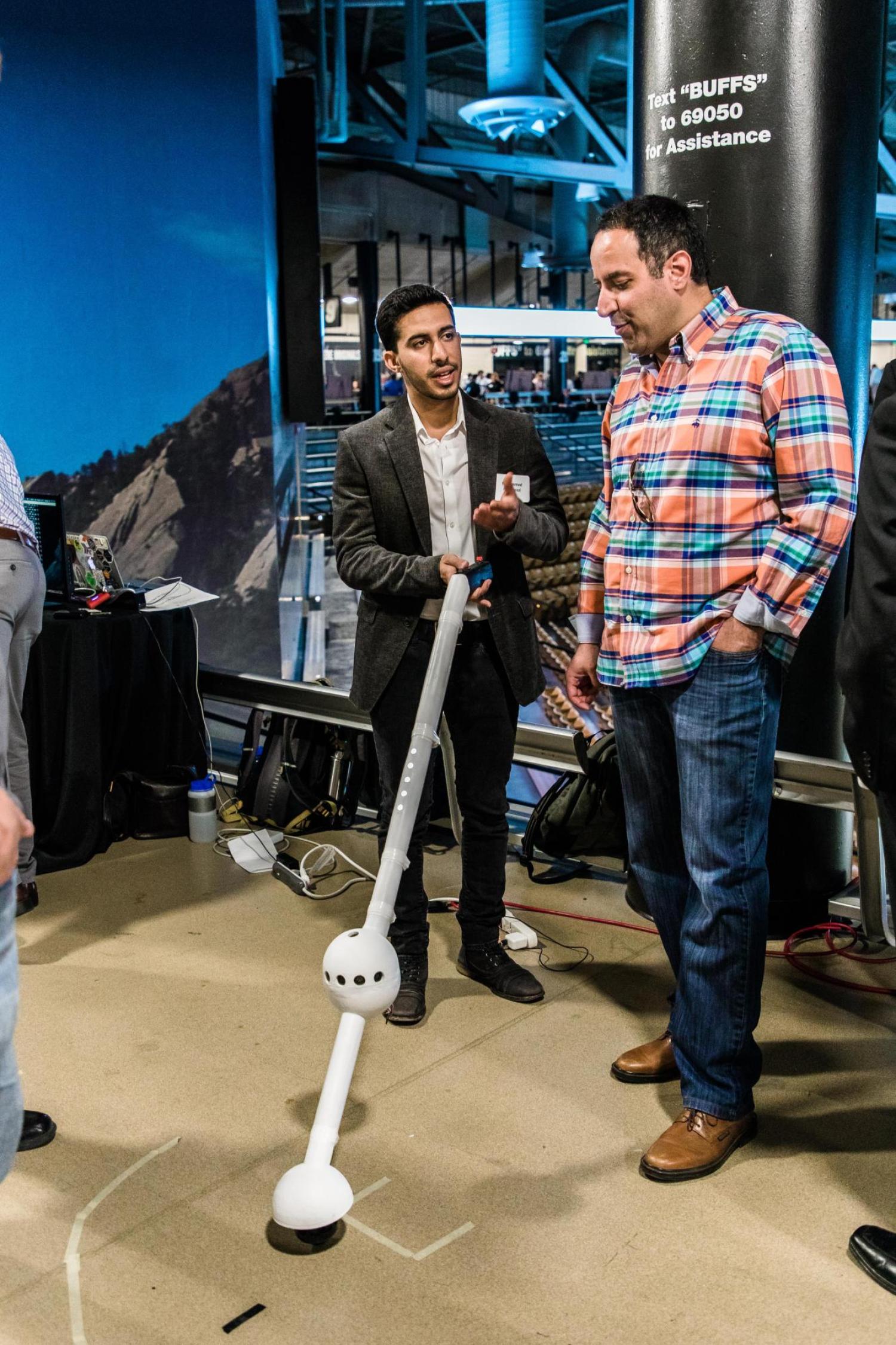insEYEt technologies

Team Name: Andrew Kaston, Meifang Li, Mohammed AlMehrezi, Khalid AlAwadhi, Vanika Hans, Josh Green
Sponsor: Dubai Municipality
Thank you to sponsor Dubai Municipality!
In today’s tech-savvy world, smartphones, self-driving cars, and artificial intelligence continue to be the frontiers of technological innovation. However, after James Biggs of Brisol invented the blind cane in 1921, Graham Carrick implanted the world’s first cochlear implant, and the crutches were first created in 1917 by Emile Schlick and A.R. Lofstrand, Jr., not much has advanced in terms of these traditional medical technologies. In addition, the costs of living a high quality life with a disability such as blindness range from extreme monetary amounts to daily inconvenience.
Specifically in terms of blindness, as it commonly results from disease, genetics, or injury, blind people often can have a difficult time navigating in new or unknown environments, especially in crowded streets. Further, although there exist many smartphone applications to aid reading/utilizing technology, there is still a challenge, as there are limited amounts of technologies available that may be inconvenient to carry around. Another potential issue, for anyone that is either blind or has astigmatism is health safety, especially if navigating alone or in a new city. However, arguably the biggest issue for blind people is society keeping low expectations for them; the social (and financial) implications of this can be very damaging, and technologies intended to aid blind people are primarily needed to help them become independent.
Thus, we propose a solution to these issues; the objective will be to culminate our multi-disciplinary range of knowledge to substantially contribute to the advancement of the blind cane. The Dubai Cane intends to help improve navigation and monitor health, in addition to alleviating the use of smartphones by providing basic data such as weather, date, and time. In hindsight, the Dubai Cane strives to encourage independence and equality of the blind, such that these people may live a normal life void of both physical and societal difficulties.
The Dubai Cane expands on the simplicity of the blind cane, and introduces a vast amount of features to the stick in order to provide blind citizens with the greatest advantages. The following features will aid the objectives above by utilizing the following:
- The cane aids in navigation through the use of a Global Positioning System which depletes the aid for guide dogs and sends the individual's location to a selected group of people through text.
- Ultrasonic sensors that expand on the basic back and forth movement of the blind stick to detect objects in the current path. This allows the individual to overall travel more safely.
- Vibration motors with various vibration patterns to indicate objects to the left, right, or directly in front.
- Heart rate and emergency sensor that allows the individual to call for assistance whenever an emergency occurs through the use of a button.
- Bluetooth module that communicates the temperature, date, and time through UART.
- The cane has a waterproof and plastic casing which allows protection for the cane and ensures that weather conditions do not prevent a blind individual from perform daily tasks.
It is through this list of functions that a blind individual may achieve great benefit. By creating a blind stick with these features, team insEYEt technologies hopes to revolutionize the blind cane, and create a more favorable model to the traditional cane. Implementing this project will optimize capabilities possible from the archaic technology.

